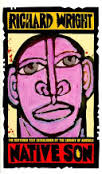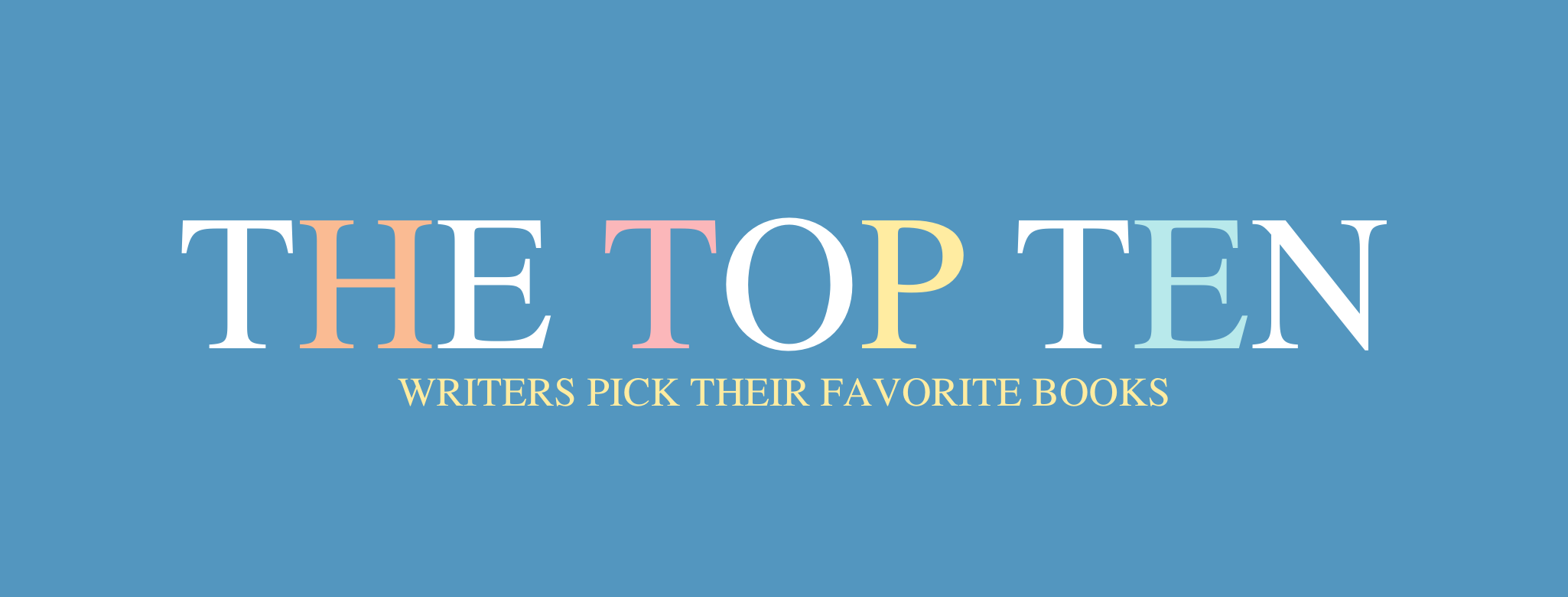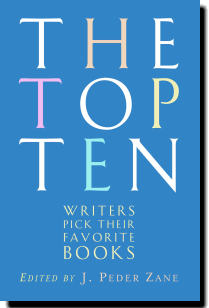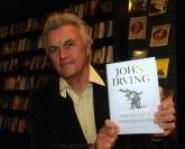This list reflects the rankings of all 174 lists published as of October 1, 2022. It was created after the publication of the book.
 1. Invisible Man by Ralph Ellison (1952). This modernist novel follows the bizarre, often surreal adventures of an unnamed narrator, a black man, whose identity becomes a battleground in racially divided America. Expected to be submissive and obedient in the South, he must decipher the often contradictory rules whites set for a black man’s behavior. Traveling north to Harlem, he meets white leaders intent on controlling and manipulating him. Desperate to seize control of his life, he imitates Dostoevsky’s underground man, escaping down a manhole where he vows to remain until he can define himself. The book’s famous last line, “Who knows, but that on the lower frequencies I speak for you,” suggests how it transcends race to tell a universal story of the quest for self-determination.
1. Invisible Man by Ralph Ellison (1952). This modernist novel follows the bizarre, often surreal adventures of an unnamed narrator, a black man, whose identity becomes a battleground in racially divided America. Expected to be submissive and obedient in the South, he must decipher the often contradictory rules whites set for a black man’s behavior. Traveling north to Harlem, he meets white leaders intent on controlling and manipulating him. Desperate to seize control of his life, he imitates Dostoevsky’s underground man, escaping down a manhole where he vows to remain until he can define himself. The book’s famous last line, “Who knows, but that on the lower frequencies I speak for you,” suggests how it transcends race to tell a universal story of the quest for self-determination.
 2. Beloved by Toni Morrison (1987). It’s a choice no mother should have to make. In 1856, escaped slave Margaret Garner decided to kill her infant daughter rather than return her to slavery. Her desperate act created a national sensation. Where Garner’s true-life drama ends, Beloved begins. In this Pulitzer Prize–winning novel, the murdered child, Beloved, returns from the grave years later to haunt her mother Sethe. Aided by her daughter Denver and lover Paul D, Sethe confronts the all-consuming guilt precipitated by the ghostly embodiment of her dead child. Rendered in poetic language, Beloved is a stunning indictment of slavery “full of baby’s venom.”
2. Beloved by Toni Morrison (1987). It’s a choice no mother should have to make. In 1856, escaped slave Margaret Garner decided to kill her infant daughter rather than return her to slavery. Her desperate act created a national sensation. Where Garner’s true-life drama ends, Beloved begins. In this Pulitzer Prize–winning novel, the murdered child, Beloved, returns from the grave years later to haunt her mother Sethe. Aided by her daughter Denver and lover Paul D, Sethe confronts the all-consuming guilt precipitated by the ghostly embodiment of her dead child. Rendered in poetic language, Beloved is a stunning indictment of slavery “full of baby’s venom.”
 3. Song of Solomon by Toni Morrison (1977). As witty and agile as a folk tale, psychologically acute and colorfully drawn, this novel blends elements of fable and the contemporary novel to depict a young man’s search for identity. In her protagonist, Macon Dead, Morrison created one of her greatest characters, and his reluctant coming of age becomes a comic, mythic, eloquent analysis of self-knowledge and community—how those things can save us, and what happens when they do not.
3. Song of Solomon by Toni Morrison (1977). As witty and agile as a folk tale, psychologically acute and colorfully drawn, this novel blends elements of fable and the contemporary novel to depict a young man’s search for identity. In her protagonist, Macon Dead, Morrison created one of her greatest characters, and his reluctant coming of age becomes a comic, mythic, eloquent analysis of self-knowledge and community—how those things can save us, and what happens when they do not.
 4. Their Eyes Were Watching God by Zora Neale Hurston (1937). Beautiful and high-spirited Janie Crawford wants love and adventure. But, as Hurston shows in her finest novel, living in an all-black town is no shield against the sexism that dictates her young life. Forced to marry one controlling old geezer, she deserts him only to end up with another. When she marries Tea Cake, Janie finally enjoys the essence of a true relationship. Her happiness is short-lived when disaster strikes, but it becomes the catalyst for ultimate self-discovery.
4. Their Eyes Were Watching God by Zora Neale Hurston (1937). Beautiful and high-spirited Janie Crawford wants love and adventure. But, as Hurston shows in her finest novel, living in an all-black town is no shield against the sexism that dictates her young life. Forced to marry one controlling old geezer, she deserts him only to end up with another. When she marries Tea Cake, Janie finally enjoys the essence of a true relationship. Her happiness is short-lived when disaster strikes, but it becomes the catalyst for ultimate self-discovery.
 5. Native Son by Richard Wright (1945). Set in Chicago in the 1930s, this novel tells the story of Bigger Thomas, an African American twisted and trapped by penury and racism. Bigger is on his way out of poverty when he accidently murders his employer’s daughter, a white woman. In this highly charged, deeply influential novel, Wright portrays a black man squeezed by crushing circumstances who comes to understand his own identity.
5. Native Son by Richard Wright (1945). Set in Chicago in the 1930s, this novel tells the story of Bigger Thomas, an African American twisted and trapped by penury and racism. Bigger is on his way out of poverty when he accidently murders his employer’s daughter, a white woman. In this highly charged, deeply influential novel, Wright portrays a black man squeezed by crushing circumstances who comes to understand his own identity.
6. A Raisin in the Sun by Lorraine Hansberry (1959). Hansberry’s award-winning play was the first by a black woman to be produced on Broadway. It focuses on the Youngers, a struggling African American family in 1950s Chicago, who must decide how to spend the $10,000 insurance money Mama collects from her deceased husband. Mama wants a home, her daughter Beneatha an education, and her son Walter a business. What ensues is a generational debate over values and whether or not African Americans can realize the American Dream.
 7. Another Country by James Baldwin (1962). Set in Greenwich Village, Harlem, and France, among other locales, Another Country is a novel of passions—sexual, racial, political, artistic—that is stunning for its emotional intensity and haunting sensuality, depicting men and women, blacks and whites, stripped of their masks of gender and race by love and hatred at the most elemental and sublime. In a small set of friends, Baldwin imbues the best and worst intentions of liberal America in the early 1970s.
7. Another Country by James Baldwin (1962). Set in Greenwich Village, Harlem, and France, among other locales, Another Country is a novel of passions—sexual, racial, political, artistic—that is stunning for its emotional intensity and haunting sensuality, depicting men and women, blacks and whites, stripped of their masks of gender and race by love and hatred at the most elemental and sublime. In a small set of friends, Baldwin imbues the best and worst intentions of liberal America in the early 1970s.
 8. Cane by Jean Toomer (1923). A hybrid of literary forms—poetry, prose, and drama—and a groundbreaking work of black literature, this book is a collage of portraits of African Americans from the urban North to the rural South. “Kabnis,” the third part of the book, unites the work’s themes in a story of Ralph Kabnis, an educated northerner who has come to Georgia to teach and is transformed as an artist by the beauty and violence of life there.
8. Cane by Jean Toomer (1923). A hybrid of literary forms—poetry, prose, and drama—and a groundbreaking work of black literature, this book is a collage of portraits of African Americans from the urban North to the rural South. “Kabnis,” the third part of the book, unites the work’s themes in a story of Ralph Kabnis, an educated northerner who has come to Georgia to teach and is transformed as an artist by the beauty and violence of life there.
 9. Lucy by Jamaica Kincaid (1990). Nineteen-year-old Lucy happily leaves her West Indian home and domineering mother to work as an au pair for a well-off and well-meaning American family. But as she develops a new sense of self and independence, she is forced to grapple with life as an outsider, a servant, and a woman of color in a country obsessed with race yet blind to history. Conveyed in Kincaid’s stinging yet poetic prose, Lucy’s awakening illuminates the divides between power and powerlessness, complacency and outrage, comfort and justice.
9. Lucy by Jamaica Kincaid (1990). Nineteen-year-old Lucy happily leaves her West Indian home and domineering mother to work as an au pair for a well-off and well-meaning American family. But as she develops a new sense of self and independence, she is forced to grapple with life as an outsider, a servant, and a woman of color in a country obsessed with race yet blind to history. Conveyed in Kincaid’s stinging yet poetic prose, Lucy’s awakening illuminates the divides between power and powerlessness, complacency and outrage, comfort and justice.
 10. Manchild in the Promised Land by Claude Brown (1965). Fierce, unsparing language and plenty of street jive power this autobiographical novel recounting Brown’s early life as a drug dealer, hustler, and thief amid the numbers runners, prostitutes, cops, and hardworking parents of Harlem in the 1940s and 1950s. His portrait of inner-city blight rises to high tragedy as Brown paints it against the hopes of Southern blacks who came north for the promise of a better life.
10. Manchild in the Promised Land by Claude Brown (1965). Fierce, unsparing language and plenty of street jive power this autobiographical novel recounting Brown’s early life as a drug dealer, hustler, and thief amid the numbers runners, prostitutes, cops, and hardworking parents of Harlem in the 1940s and 1950s. His portrait of inner-city blight rises to high tragedy as Brown paints it against the hopes of Southern blacks who came north for the promise of a better life.



